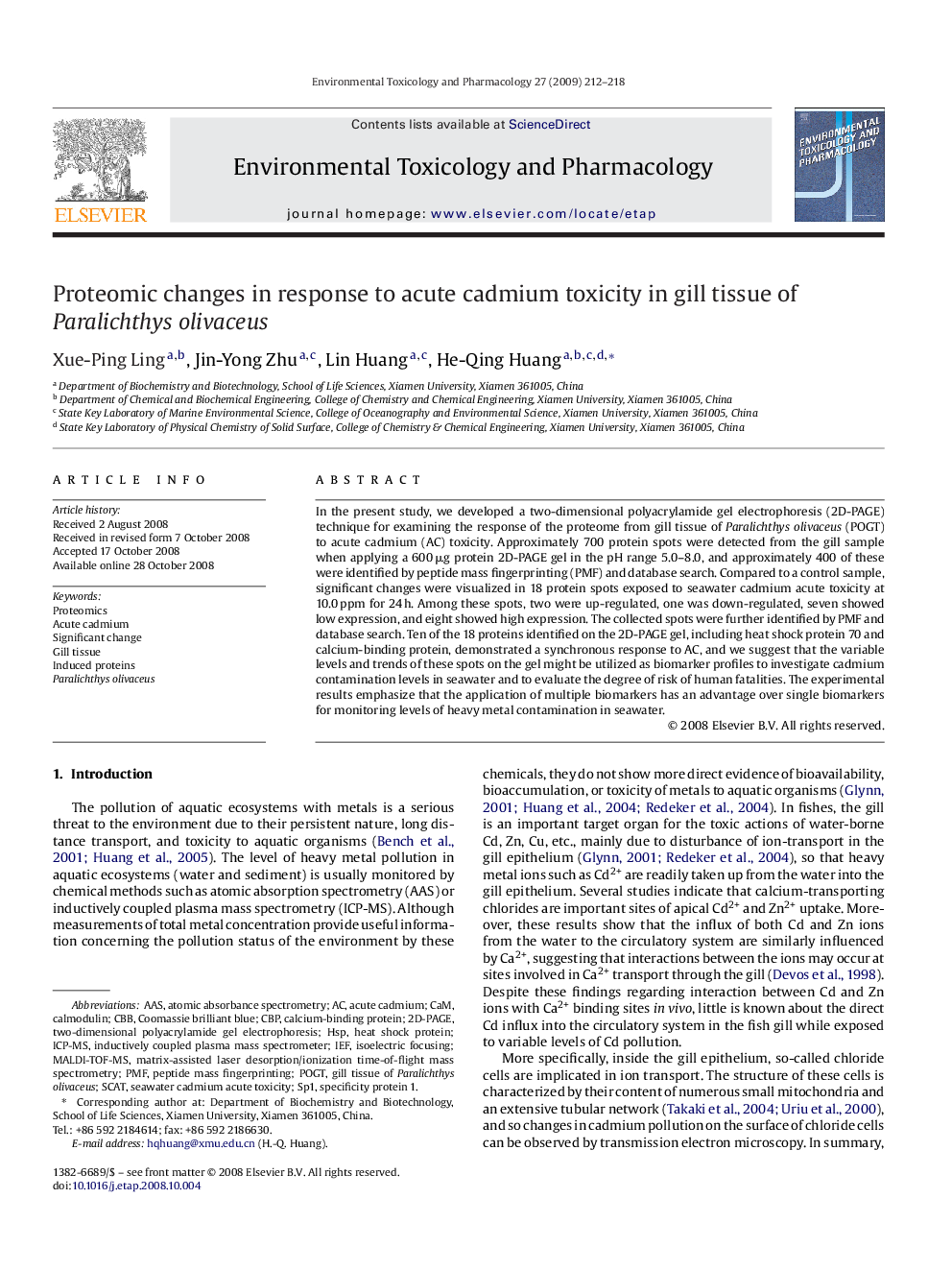| Article ID | Journal | Published Year | Pages | File Type |
|---|---|---|---|---|
| 2583948 | Environmental Toxicology and Pharmacology | 2009 | 7 Pages |
Abstract
In the present study, we developed a two-dimensional polyacrylamide gel electrophoresis (2D-PAGE) technique for examining the response of the proteome from gill tissue of Paralichthys olivaceus (POGT) to acute cadmium (AC) toxicity. Approximately 700 protein spots were detected from the gill sample when applying a 600 μg protein 2D-PAGE gel in the pH range 5.0-8.0, and approximately 400 of these were identified by peptide mass fingerprinting (PMF) and database search. Compared to a control sample, significant changes were visualized in 18 protein spots exposed to seawater cadmium acute toxicity at 10.0 ppm for 24 h. Among these spots, two were up-regulated, one was down-regulated, seven showed low expression, and eight showed high expression. The collected spots were further identified by PMF and database search. Ten of the 18 proteins identified on the 2D-PAGE gel, including heat shock protein 70 and calcium-binding protein, demonstrated a synchronous response to AC, and we suggest that the variable levels and trends of these spots on the gel might be utilized as biomarker profiles to investigate cadmium contamination levels in seawater and to evaluate the degree of risk of human fatalities. The experimental results emphasize that the application of multiple biomarkers has an advantage over single biomarkers for monitoring levels of heavy metal contamination in seawater.
Keywords
Paralichthys olivaceusAAS2D-PAGEPMFGill tissueCBBIEFCBPHspCoomassie Brilliant BlueSp1Peptide mass fingerprintingmatrix-assisted laser desorption/ionization time-of-flight mass spectrometryscATtwo-dimensional polyacrylamide gel electrophoresisisoelectric focusingCAMInductively coupled plasma mass spectrometerICP-MSMALDI-TOF-MSSpecificity protein 1ProteomicsHeat shock proteincalcium-binding proteinCalmodulin
Related Topics
Life Sciences
Environmental Science
Health, Toxicology and Mutagenesis
Authors
Xue-Ping Ling, Jin-Yong Zhu, Lin Huang, He-Qing Huang,
